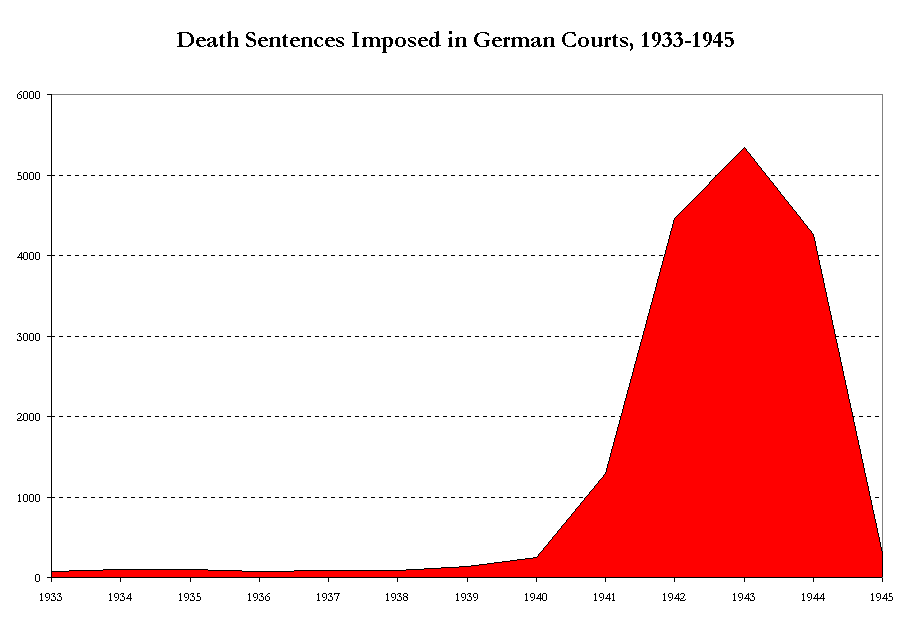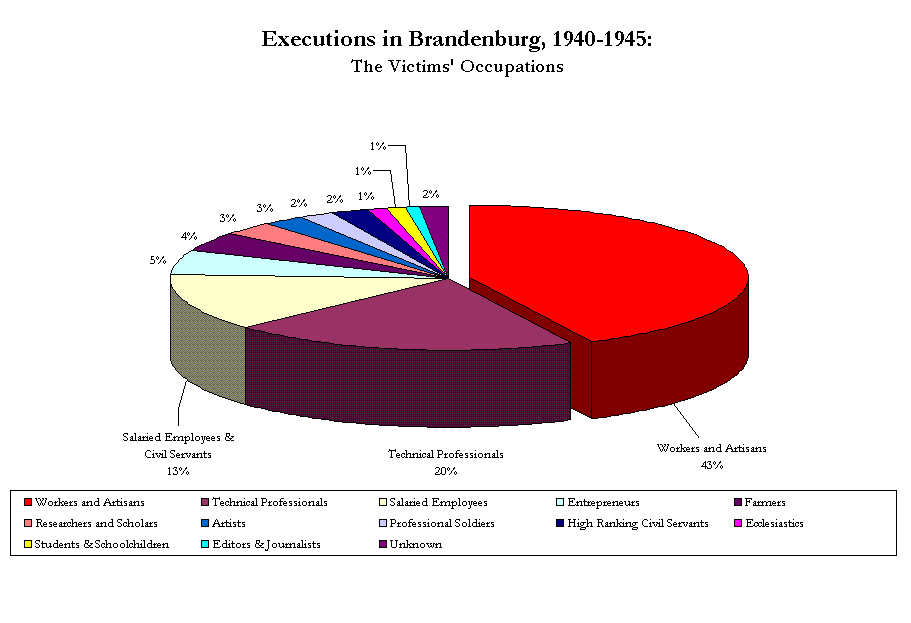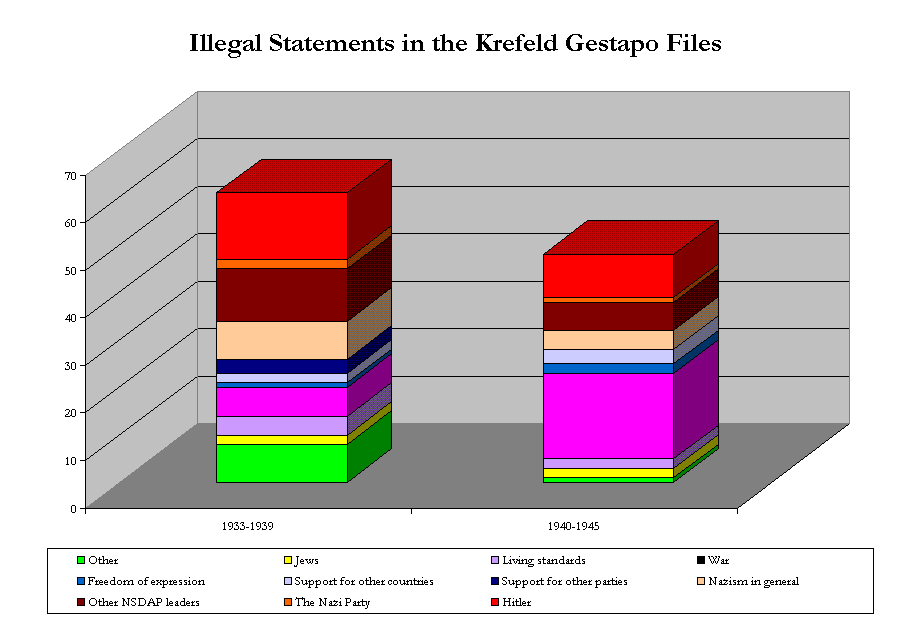
Source: Institut für Zeitgeschichte, München - Berlin 1999 (http://www.obersalzberg.de/ausstellung/terror/terror5.htm)
It is generally accepted that during the war, the severity of political repression in Germany increased dramatically. For one thing, the war and the war economy created new kinds of “crimes,” such as “demoralization” (Wehrkraftzersetzung) and “race mixing” with Eastern European conscript laborers—the subject of Andrzej Wajda's film, A Love in Germany. By the early 1940s, the death penalty was called for in more than forty separate types of offenses. Data on the numbers of death sentences imposed by German courts seem to bear this impression out: they reveal a sharp increase beginning in 1940, the first full year of war, and skyrocket after that until 1943.
But one must also treat such figures with caution: the territorial extent of Germany also increased during these years, which accounts for a portion of the increase. Furthermore, these figures do not speak to the nationality or social background of death-penalty victims, an enormous number of whom were foreign workers or Jews. According to Richard Evans, over half of the people who received the death penalty in 1941 were Poles. The bias reflected unequal treatment in the meting out of sentences: a German was likely to be treated far more leniently than a non-German, whatever the crime in question. As Eric A. Johnson notes, “an offense that would have been punished by a limited prison term for a German often led to a sentence of life imprisonment or death for a Pole, Russian, Jew, or Gypsy.”
There were social biases at work as well:

Note: the category of “technical professionals” includes
technicians, engineers, architects and master builders; “entrepreneurs”
includes industrialists and salespeople in addition to businessmen and
women. Source: Wolfgang Michalka, Das Dritte Reich, vol. 2, Weltmachtanspruch
und nationaler Zusammenbruch (Munich: DTV, 1985), 402.
If we look at the occupations of people condemned to death during the war — in this case, the data come from death sentences passed by regular courts in the Prussian province of Brandenburg — we discover that while workers and artisans constituted the largest group by far, as one might expect, the professions are heavily overrepresented: technicians, engineers, salaried employees, civil servants, artists, university students and professors. An explanation for this may involve shifting priorities: during the 1930s and especially before 1936, leftist and clerical opposition had been the main targets of repression.

Source: Johnson (1999), 340, based on a random sample of 433 case files from the Krefeld Gestapo office.
Data on the illegal opinion statements by Germans seem to confirm the
suggestion that draconian repression fell mainly on foreigners and natives
who were members of already targetted groups, such as Communists, Jehovah's
Witnesses, Jews or other “racial aliens”. This chart is based on illegal
opinion statements contained in a random sample of Gestapo case files from
Krefeld, an industrial center in the Rhineland. They suggest that the war,
ordinary Germans became only slightly more circumspect in lampooning the
regime and complaining about living conditions than they had been before
1939. Hitler — the main target of recorded slanders before the 1940 — remained
a favorite after the war began; Goebbels and Göring came in second.
The war did bring about one major change: grumbling about the war
itself became the largest single category. Such activity could bring charges
of “demoralization” (Wehrkraftzersetzung), but as Johnson
argues, the prosecution of such crimes may have been slightly more lenient
during the war years...as long as the defendant was not a foreigner or
“racial alien.”
Eric A. Johnson, Nazi Terror: The Gestapo, Jews, and Ordinary Germans (New York: Basic Books, 1999).
Richard J. Evans, Rituals of Retribution: Capital Punishment in Germany, 1600-1987 (Oxford: Oxford University Press, 1996).
Return to 443/543 Homepage